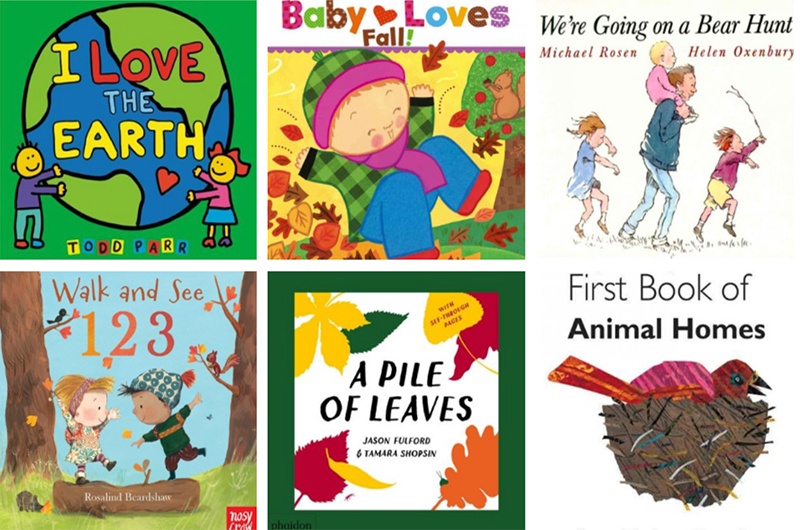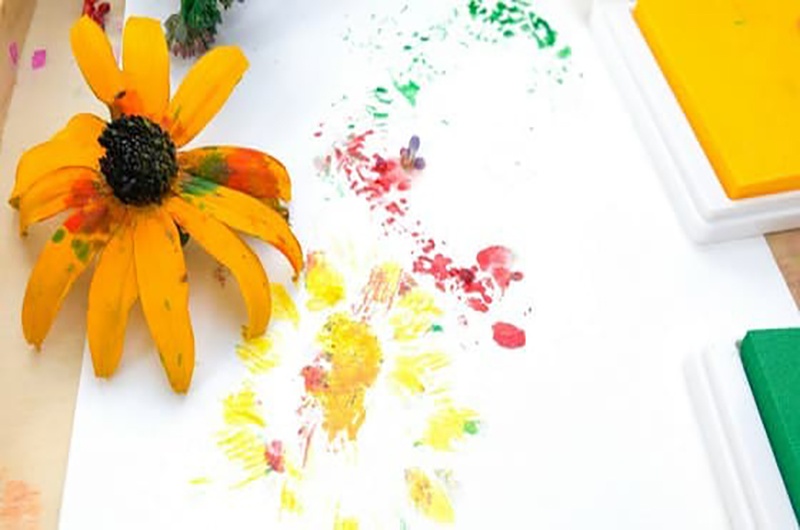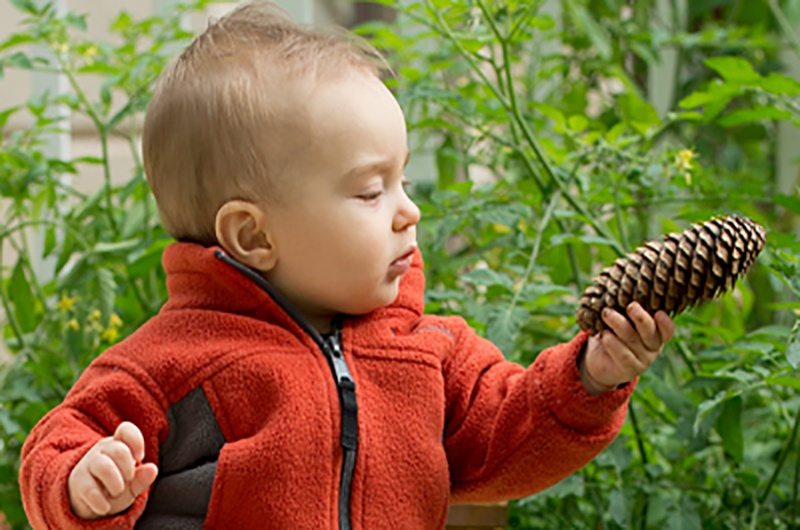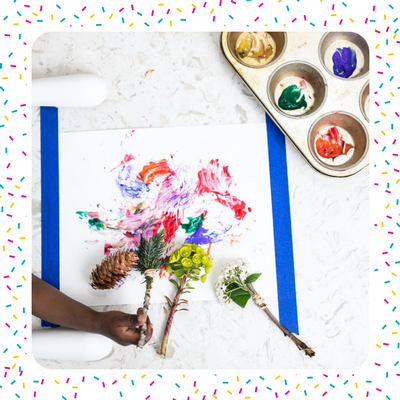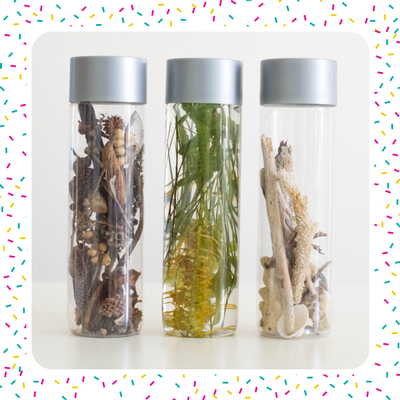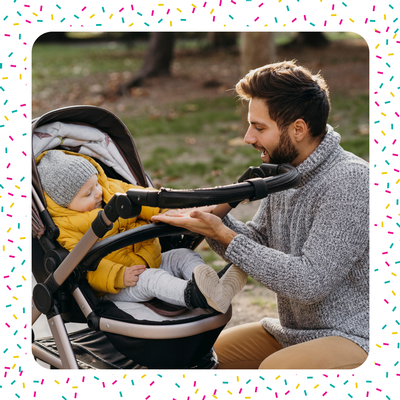Read, Baby, Read is a Free Library initiative focused on encouraging early literacy development among infants and young toddlers under two years old. We work with 12 participating libraries across Philadelphia to reach caregivers of all ages, providing resources that support early literacy skills, language development, and purposeful play. In addition, you can find early literacy tips and resources on our Instagram page @read.baby.read!
Each month, we bring you fun activity ideas with a theme based on the five early literacy practices from Every Child Ready To Read: Read, Sing, Write, Play, and Talk! So far, we’ve explored vehicles, animals, the body, water, food, shapes, and feelings!
This month is all about nature!
READ
There are many fantastic board books about nature available in the Free Library’s catalog. It’s easy to place holds online for free and schedule curbside pick-up at neighborhood libraries.
- I Love The Earth by Todd Parr
This colorfully illustrated book is all about appreciating nature and the environment. You can also check out The Earth Book by the same author.
- Baby Loves Fall! by Karen Katz
Let your child lift the flaps to discover different fall activities. Also available in Spring, Summer, and Winter versions!
- We’re Going on a Bear Hunt by Michael Rosen
Explore the sounds of different obstacles in nature in this classic tale of a family on a bear hunt. You can also listen to this book being read on our Instagram page!
- Walk and See 1, 2, 3 by Rosalind Beardshaw
This counting book follows the characters as they take a walk through nature and explore their surroundings.
- A Pile of Leaves by Jason Fulford and Tamara Shopsin
The clear pages of this unique book allow children to explore each individual leaf in a "pile" of leaves.
- My Very First Book of Animal Homes by Eric Carle
This puzzle book lets children mix and match animals with their homes in nature.
For an added nature experience, bring some books with you to the park and have an outdoor storytime with your little one!
SING
There are lots of ways to sing about nature, including singing about trees and other plants, weather, and seasons. Many classic nursery rhymes are about flowers, such as "Roses are Red," "Ring around the Rosie," and "All Around The Mulberry Bush." Sequencing songs (where you add on more lines each verse) like "The Green Grass Grew All Around" are great for helping children learn through repetition. For an underwater version of a sequencing song, try "There's a Hole in the Bottom of the Sea". Songs that involve touch, such as "Round and Round the Garden", help foster bonding between you and your child. For even more nature-inspired song ideas, Jbrary has a variety of themed playlists full of action songs and lap bounces, including Autumn, Summer, Winter, Weather, Ocean, Animal, and Insect-themed storytime playlists. To add to the music experience, try making a D.I.Y. rhythm stick using sticks and an empty bottle.
WRITE
Nature-based art activities are a great way to help your child develop their pre-writing skills. You can make your own paintbrushes out of sticks, leaves, and other materials from nature. Learning to hold a paintbrush is the first step toward eventually holding a pen for writing! You can even skip the paintbrush part and let your child use an object from nature as their painting utensil, such as painting with a pinecone or a big leaf. Have some stamp pads? Try using a leaf or flower instead of a stamp for some nature-inspired stamp art. If your child has trouble holding a paintbrush or other painting utensil, they can still make nature art using their hands. Let them "draw" with their finger in a natural material like mud or sand. Using just their fingers to write in sand or other substances helps your child learn how to draw and make shapes before they’ve mastered holding a crayon or paintbrush.
PLAY
Nature play is one of our favorite types of play and it has lots of benefits! Our biggest piece of advice is don’t be afraid to get dirty—it’s all a part of the sensory experience. Sensory play that explores new terrains (such as sand, grass, dirt, puddles, or leaves) helps your child explore new sensations as well as work different muscles than they normally use to crawl or walk on solid surfaces. Let nature be their new toy by giving them a chance to pick up and explore new materials like sticks and rocks (but always remember to keep a close eye on your baby to make sure their new "toy" doesn’t turn into a snack). Items from nature are great to use as "loose parts," which is what we call open-ended materials that children can manipulate in different ways. You can also make your own toys out of nature, such as D.I.Y. sensory bottles. Even regular play with traditional toys can be brought outside for a new experience. Grab a blanket and some toys and let your baby simply play outdoors—spending time outside actually helps them sleep better. Or bring some playdough with you and let them play with it on different surfaces, like the bark of a tree.
TALK
One of our favorite ways to talk to babies about nature is while taking a nature walk (or stroll)! This just means walking around your neighborhood or a local park and noticing the world around you. Talk about what you see as you walk and use it as a way to expand vocabulary. If you see leaves or flowers, talk about the colors. If you spot a doggy or a bird, try making animal noises with your baby like "woof woof" or "chirp!" Research shows that babies are more likely to verbalize experiences they have outdoors. You can even collect some souvenirs during your walk to create an outdoor treasure box, so that you can continue the discussion about nature when you’re back home.
Be sure to follow us on Instagram for daily tips and resources about early literacy as well as weekly virtual baby storytimes. And stay tuned for next month’s installment of this blog series with a brand new theme!
Read Baby Read’s team includes Early Childhood Specialists, Sarah Jacknis and Natasha Smith, and Program Coordinator Naisha Tyler. If you have questions about our program, feel free to email Naisha Tyler at tylern @ freelibrary.org.
Read Baby, Read is made possible by a generous grant from the William Penn Foundation.
Have a question for Free Library staff? Please submit it to our Ask a Librarian page and receive a response within two business days.

